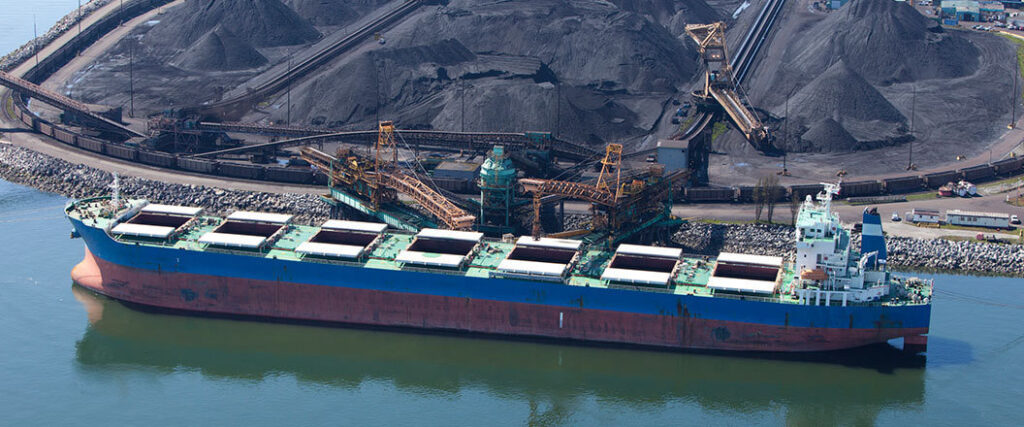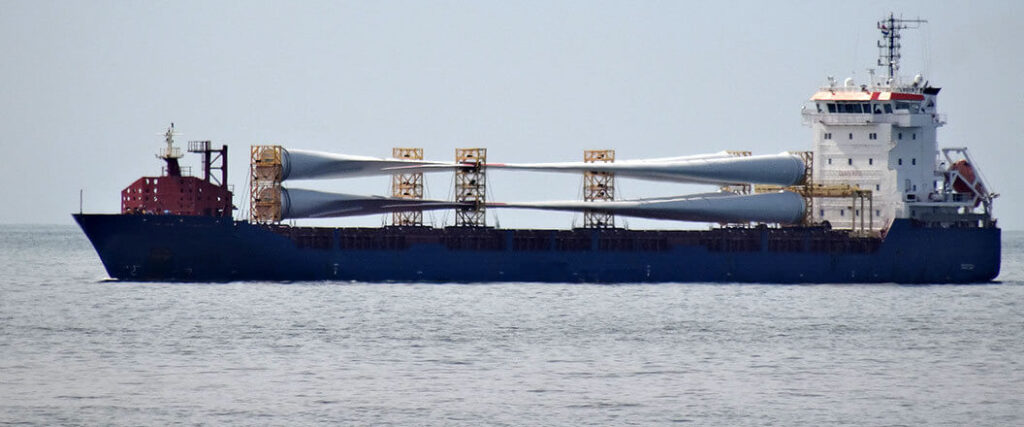
What is break bulk shipping and how can it benefit importers and exporters? Many shippers who have never used this form of ocean transportation often ask themselves this same question. Fortunately, shippers will find that this method of ocean transport is extremely useful when needing to ship oversize goods.
Break bulk shipping is a way of shipping oversized freight without having to break it down and place it into separate shipping containers. Instead, freight is transported within the confines of bags, boxes, crates and drums. Break bulk has many tradeoffs like easier loading/unloading, at the cost of higher expenses.
There are many facets of break bulk shipping that we’ll explain so you can have a better understanding of the service before you use it.

Containerized cargo is by far the most common way for most goods to be transported. Unfortunately for importers and exporters of oversize freight, container transport by cargo ship isn’t always the best option for them.
Break bulk shipping presents a great solution to this problem. Instead of cargo containers, oversize freight is placed into crates, drums, or barrels and is shipped off in these intermediary containers. This makes it easier for shippers that need to move some of the following types of freight:
Cars can even be transported using this method of ocean freight shipping. Using the roll-on-roll-off (RoRo) services, you can even import and export vehicles of all shapes and varieties.
Break bulk shipping is a popular transportation method and given the data below, it’s not likely to stop anytime soon.
| 2016 | 3,009 |
| 2017 | 3,151 |
| 2018 | 3,215 |
| 2019 | 3,218 |
| 2020 | 3,181 |

No shipping method is without its faults and break bulk shipping is no different. You should know some of the downsides that accompany this shipping service before you choose to use it.
There is a considerable amount of risk that comes with break bulk shipping. A container provides a considerable amount of protection from the elements that crates and drums can’t. This will increase the chances of your freight suffering damage from weather events.
Another factor that makes break bulk shipping risky is how difficult the loading and unloading process can be. Oversized or oddly shaped freight often needs to be loaded into a ship using a crane. Even with the practice of proper safety precautions, accidents could occur and cause your freight to sustain damage.
If you want to save yourself some money when importing or exporting goods overseas, then break bulk shipping is not the method you should use. There are a few different factors that contribute to the high cost of using break bulk shipping such as:
While break bulk shipping might be very convenient in a lot of ways, you should be prepared to pay the extra expenses it will cost you.
One problem you’ll run into when shipping break bulk cargo is scheduling a vessel to transport your goods. Because most dry bulk freight is oversized or has an odd shape, transporting the goods requires the use of a multipurpose vessel.
These types of vessels are designed to carry other types of cargo besides containers. Unfortunately, booking transportation on one of these vehicles is fairly difficult. There are two specific reasons for this:
For these two reasons, booking space for your break bulk freight to travel is hard, but not impossible.


Despite there being some negatives to breaking bulk shipping, there are plenty of benefits that come with using this shipping method. Many importers and exporters opt to use break bulk shipping for the reasons below.
The alternative to break bulk shipping would be to take your oversized freight and break it down into smaller parts. Then, you would ship those smaller parts in separate containers. Using this method works, but taking oversized freight apart is labor intensive and takes time and money.
Break bulk shipping saves you that time because it allows you to send your freight off as is. There are a few reasons why this is so beneficial:
Since time and labor don’t have to be spent breaking the freight down, break bulk shipping allows the shipper to send the freight to the port much faster.
Break bulk shipping will allow you to transport a wider amount of freight varieties. Cargo containers come in different sizes, but you’ll still be hindered by what type of freight you can load into them regardless. Transporting freight using break bulk opens up the opportunity to transport goods that can’t be transported using cargo shipping.
The last benefit of using break bulk shipping is that it can be received by most ports around the world. Some developing nations either don’t have the technology or ports large enough to support container ships coming to dock.
These developing nations do, however, have the capacity to accept break bulk goods traveling on a smaller multipurpose vessel. Therefore, you won’t have to ever worry about your break bulk shipment being rejected when they arrive at a port in another country.
If you’re worried that your freight might not qualify for break bulk shipping, then fear not. There are two other types of bulk shipping that you can take advantage of. Each of these bulk shipping options is suitable for a variety of different goods.
This variety of bulk cargo is used to describe goods that are transported without an intermediate container such as a box, bag, or drum. Freight that fits into this category is transported using a dry bulk carrier, rather than the multipurpose container used to transport break bulk shipments.
Solid bulk shipping is used for the following types of freight:
Dry bulk carriers transport these materials, and many more, within the confines of their cargo holds. Cargo holds have hatches that protect the freight from any weather events the ship might be caught in.
Importers and exporters of liquid materials use liquid bulk shipping as their go-to shipping method. Transportation of this type of freight is carried out by a tanker ship. Like with solid bulk, there is a vast array of liquid bulk goods that are transported using this shipping method, such as:
Tanker carriers also carry their freight within the confines of their cargo hold or tank. With the help of specialized pumps, this liquid is injected into the cargo hold where it will travel safely within the ship.

As we mentioned earlier, booking a multipurpose vessel to transport your break bulk shipment can be very challenging and it’s one of the downsides to using this shipping method. Fortunately, a freight forwarder can help you in this regard by booking a shipment for you.
The reason a freight forwarder will help you book a vessel for break bulk shipping is that they partner up with a variety of carriers. With these connections, a freight forwarder can easily book space on a multipurpose vessel to transport your freight.
We also mentioned that break bulk shipping is quite expensive. A freight forwarder can help you out in this respect as well. Since they have good relationships with carriers, a freight forwarder can negotiate a better rate for you. Getting a better shipping rate will help bring down the overall cost of your shipment.
Want to know more about freight forwarding in logistics? Read our article to learn more.
USA Freight Forwarding Services can assist you in importing or exporting a break bulk shipment. Ocean freight shipping is one of our specialties, and with it, we can arrange transport of your break bulk cargo with no problem.
In addition to our ocean freight shipping services, we also provide international air transport. While not the best form of transport for oversized freight or bulk cargo, international air is great for smaller goods and is much quicker than ocean transport.
No matter what type of freight you’re shipping, we can offer the following services:
Another option you might find useful is booking a consulting session with one of our freight forwarders. They’ll be able to answer any questions and resolve any concerns that you might have about moving your freight. Give us a call at (866) 941-8081 or fill out our free quote form today.
